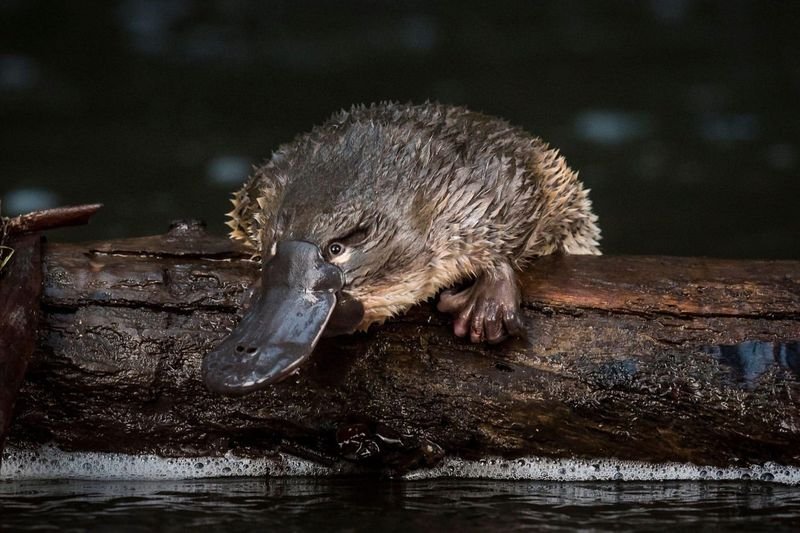
The platypus, native to Australia, is quite fascinating, with its duck-bill, webbed feet, and ability to lay eggs like a bird. But let’s be clear: despite their unusual charm, these animals have some surprising traits that could pose risks. So, let’s break down what you should know about the *platypus’s potential dangers*, exploring everything from their venomous capabilities to their overall behavior around humans.
What Makes the Platypus Unique?
The platypus is one of only a few mammals that lay eggs, which is already pretty unusual in the animal kingdom. It’s part of a small group called monotremes, which also includes echidnas. With a body covered in dense fur, they thrive in the water. Their duck-like bill is packed with sensors to help them locate food underwater. Imagine that! They can hunt by feeling the vibrations around them rather than relying solely on sight.
They are also equipped with webbed feet, perfect for swimming, and when they’re on land, those webbing retracts, exposing sharp claws. This adaptability is fascinating! However, this unique combination of traits can lead to some misunderstandings about their behavior and potential dangers.
Venom: The Platypus’s Hidden Weapon
One of the most surprising facts about the platypus is that males have venomous spurs on their hind legs. Yes, you read that right! This isn’t something you’d typically associate with a cute-looking animal. The venom can cause severe pain and swelling in humans, though it’s not life-threatening.
So how does this venom work? It’s mainly used during the breeding season when males compete for mates. If they feel threatened, they can deliver a painful sting. The venom contains a mix of proteins that not only cause pain but can also lead to some really uncomfortable swelling. So, if you ever find yourself face-to-face with a male platypus, it’s best to admire from a safe distance!
How Often Do Platypuses Attack Humans?
The good news is that attacks on humans are extremely rare. Platypuses are generally not aggressive animals. They’d much rather swim away than confront a person. Most of the time, they’re shy and prefer solitude. Imagine a platypus lounging gracefully in the water, avoiding any drama.
However, they can feel threatened. If you stumble upon a platypus in the wild and it perceives you as a danger, it might react defensively. But let’s be real; they’re not out to get you. The most significant risk comes from accidentally stepping on one or catching it in a net while fishing, which could lead to a defensive response.
Common Misunderstandings About Platypuses
Sometimes, people think that because platypuses seem so quirky and harmless, they can be handled without care. That’s not true. Just like any wild animal, they should be respected and observed from a distance. People often compare them to domestic animals like dogs or cats, but platypuses are wild creatures.
Here are a few common misunderstandings about platypuses:
- They’re friendly: While they might look cuddly, they can be quite reserved and prefer to avoid human interactions.
- They’re harmless: The venomous spurs are a real defense mechanism—never underestimate them!
- They won’t bite: Though rare, they can bite if they feel cornered or threatened.
Understanding these points helps keep both humans and platypuses safe.
Encounters with Platypuses: What to Do
If you find yourself near a platypus, remember to keep your distance. Ideally, bring binoculars if you want to catch a closer look! If you’re swimming or fishing in areas where they’re known to thrive, stay aware of your surroundings.
Here are a few steps to ensure a safe encounter:
- Observe quietly: Platypuses are sensitive to noise and movement. The calmer you are, the better.
- Avoid approaching: If you see one, watch from a distance. They’re best appreciated in their natural environment.
- Don’t corner them: If they feel trapped, they might defend themselves. Give them space!
By respecting their wild nature, you can enjoy watching these unique creatures without causing them stress—or putting yourself at risk.
So, can the platypus be dangerous to humans? In short, yes, but not in the way you might think. While they have venomous spurs and can defend themselves if threatened, they’re primarily shy and tend to avoid human contact. Focus on enjoying their quirky nature from a distance, and you’ll find that they’re more fascinating than frightening.
Just remember, the platypus is a unique creature with its own ways of navigating the world. By understanding their behavior and respecting their space, you can appreciate this remarkable animal without worry. Next time you hear about platypuses, you can share your newfound knowledge about their potential dangers—and their charming quirks!

